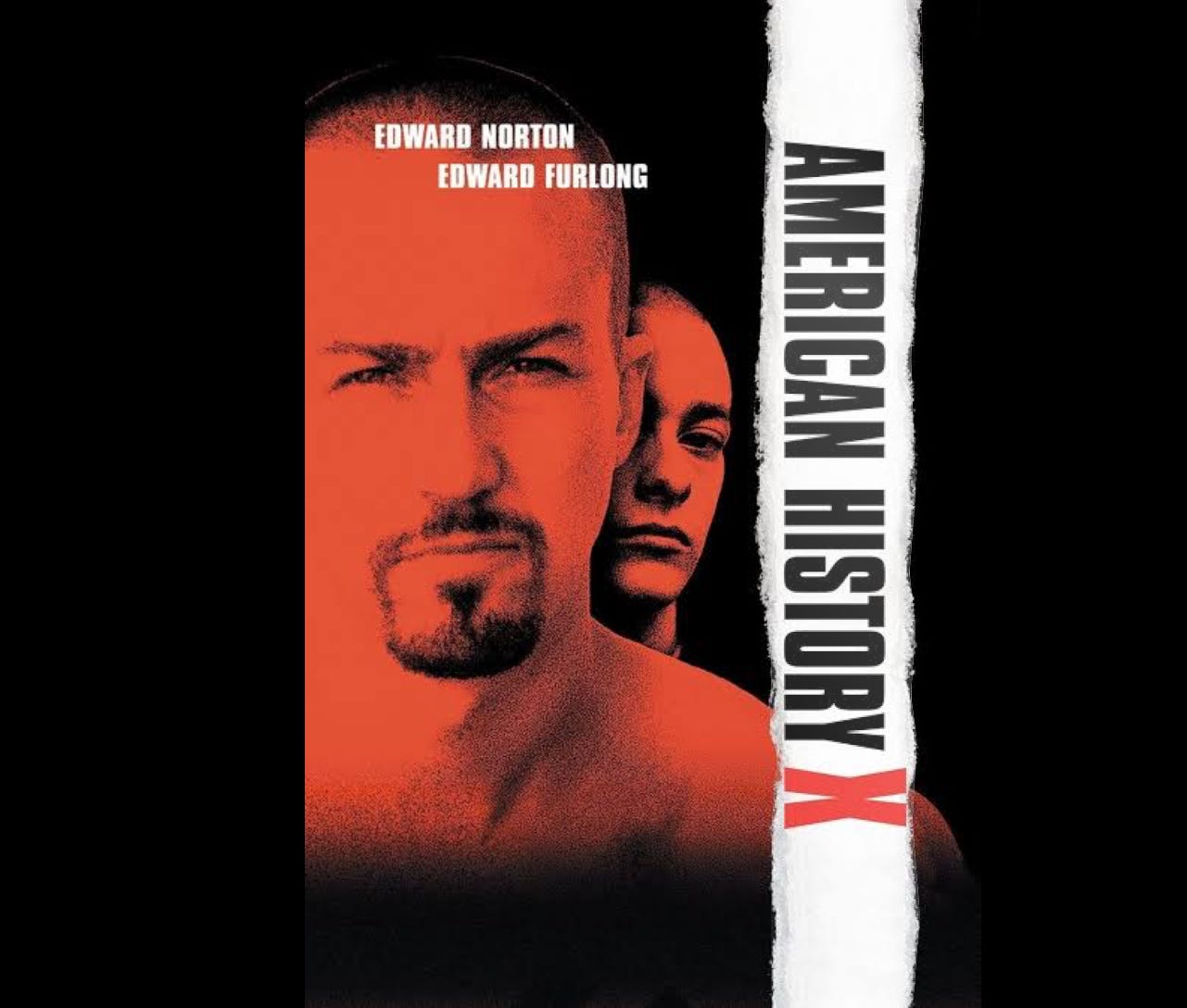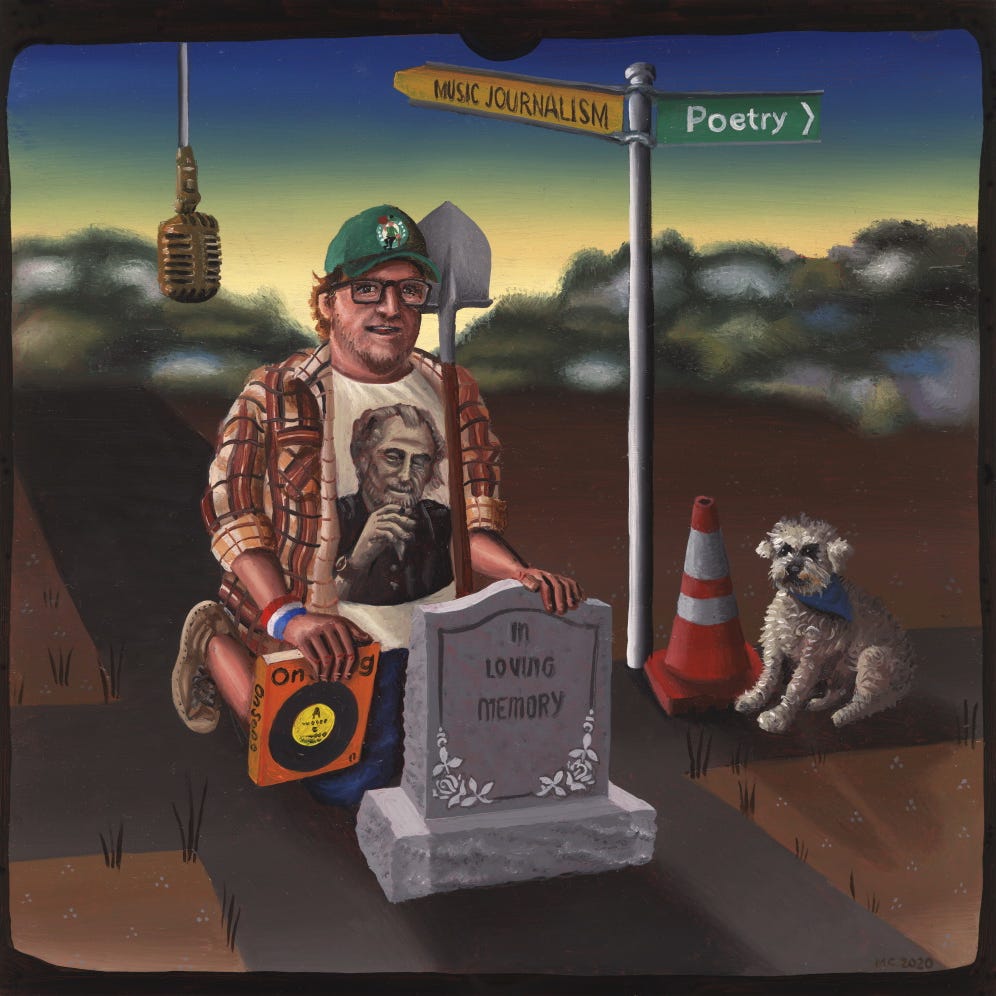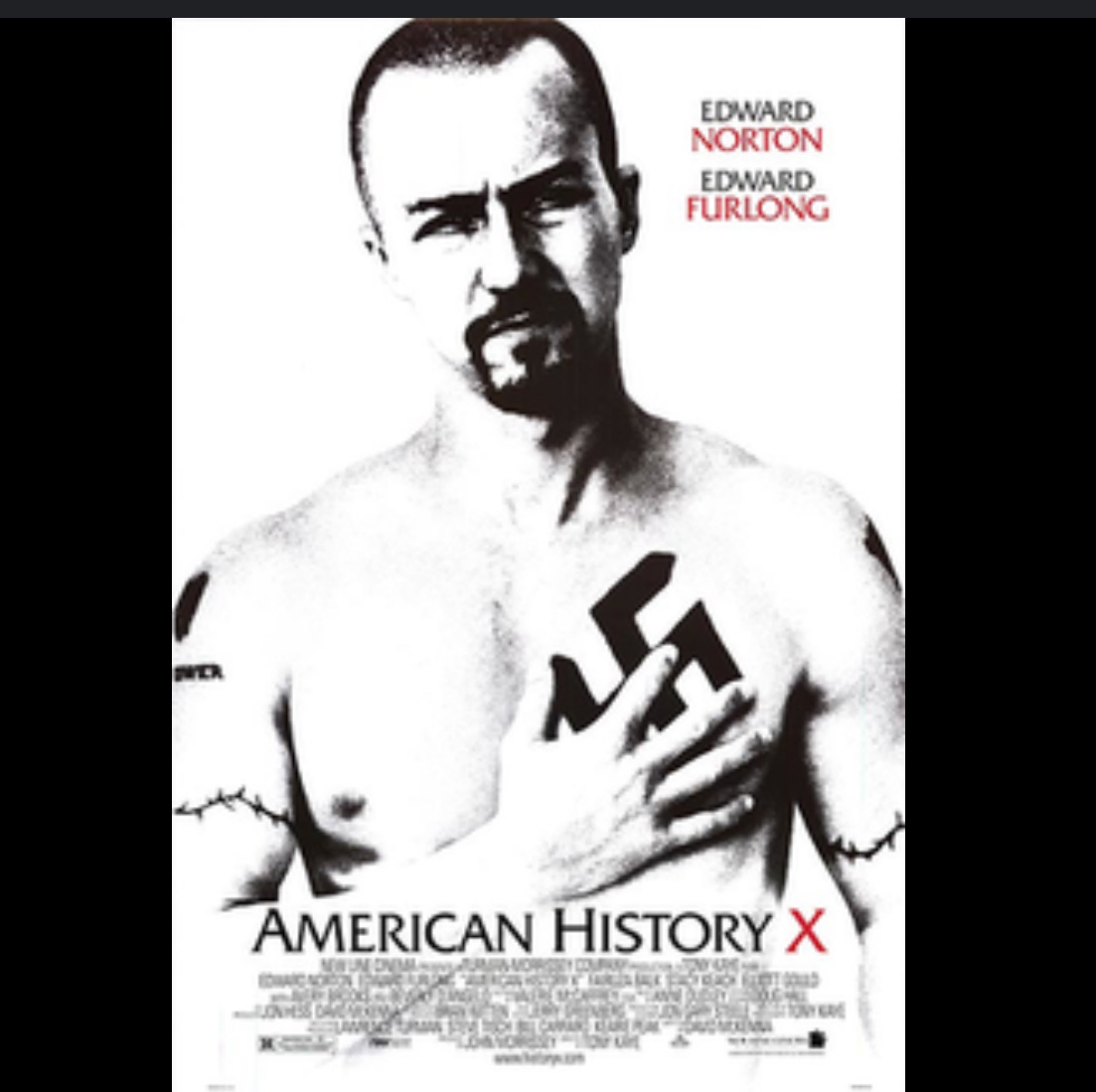Watching American History X as a Sunday night Family Movie
Monday is about movies and TV. Today, the world’s “worst” (or best) Sunday Night Family Film…
Kids today. They don’t even say the darndest things anymore — they say the darkest things. They say the most nonsensical skippity-toilet things too. But when my son started going on about would you rather this [something stupid along the lines of suddenly inheriting millions of dollars] or “make your enemy bite the curb”, I knew I had to spring into action.
I told him we were going to watch the movie where that came from. He knew about it, had heard of it. But yeah. We were watching it. I wasn’t quite going to get the forceps onto his eyes like in A Clockwork Orange, but I was keen to confront him with this footage. We’ve watched a lot of scary films, a few that are probably deemed inappropriate, and we’ve certainly pushed the boat out in other areas of cinema, and maybe a little too far at times.
When I was a kid I said some stupid shit. Hey, I’m still doing that now! But I grew up in a different time (and place). The Hawke’s Bay I grew up in was racist, and we were racist — we sometimes didn’t know it. We often did. We were influenced by the generations above us, but we also liked to shock. That’s what kids do.
But my little guy — both a big kid, and a total softie — talking about people biting curbs. Hell no.
American History X is a 1998 crime drama by Tony Kaye. It was his feature-length debut, and he didn’t really amount to much as a filmmaker following this. There are other titles, but nothing punched through in quite this way.
The film tells the story of a family indoctrinated into hate — and goes on to tell a parallel story of trying to stop the cycle of violence and fear and hatred. It was an important film for a few reasons, and arrived right in the middle of an incredible run of movies where Edward Norton was making his name. He had wowed a couple of years earlier with Primal Fear and followed it up with solid roles (The People Vs. Larry Flint, Everyone Says I Love You, Rounders) but it was really the one-two of American History X and Fight Club on the back of Primal Fear that had many talking about him being that generation’s Marlon Brando.
I saw American History X at the cinema. I was 21 or something like that. I was a white, privileged college bum, taking my time to do what I wanted with an occasional side-gig as a student. I was working in a record store, and my biggest concern was splitting this extra money between staff discounted piles of CDs, movie tickets, and drinks at any bar that would have me.
American History X reminded me — in an exaggerated sense — of the Hawke’s Bay I had sometimes seen. I wasn’t attending skinhead parties, nor believing in anything close to the doctrine, but I had team mates in adult sports teams that had pictures of Hitler on their walls, that used the ‘N’-word at their dinner table, that talked about curses and plagues and panicked about bloodlines. And I did a lot of looking at my shoes. You see, when you were 16 or 17 back then you just looked at your feet and acted a bit embarrassed. You quietly went along with it without actually going along with it.
Today’s 16 and 17 year olds know that shit is not right. And to call it out. And we are stronger for that. Or should be. If a few old fearful Boomers would just acknowledge that some of the beliefs they had are just not okay, and younger people calling that out aren’t just uppity youngsters, although sometimes they might be, they’re acutely less fearful of certain things and way more scared of whole other hellscapes.
Today’s 12 year olds still talk a tough game too. But they (hopefully) aren’t so broken, so dissuaded, disenfranchised, or desperate to continually shock that they can’t recognise an error of judgment and phrasing in the face of context.
So last night we watched American History X as a family.
I’d been thinking about the film a lot over the last few years, with dark humour I imagined it as being more of a documentary in the era of Trump’s America. I remember it being a stacked cast (Edward Furlong, Fairuza Bulk, Beverley D’Angelo, Avery Brooks, Elliott Gould, Stacy Keach, Ethan Suplee). And though I knew the key scenes and movement of it — it had been more than 20 years since I’d last seen it.
When I first watched it, the impact of it was enormous. It was thrilling, and I guess not in a good way — or maybe it is in a good way. It wasn’t a complete lesson, or my first time thinking about this, but it was a strong comment, with great acting. The music of Anne Dudley was key too, particularly in the final scenes, signposting a distressing conclusion, some tension still unfolding.
Many people will remember the brutal ‘bite the curb’ scene of American History X, it is teased in the film’s opening, and revealed about mid-way through. Norton’s character goes to jail for the execution-style killing of three black youths. They were attempting to steal his car from outside his house, a revenge hit of sorts because of the skinhead’s known racism and his affiliations with a grooming propaganda spreader (Stacy Keach, who else?) And then Derek (Norton) shoots two people in the back of the head in his street, and makes the surviving member of the gang put his mouth on the edge of the footpath. We wince as we see his teeth biting down into the curb. We know what’s coming.
It’s still a look-away moment, 25+ years on. A huge boot down on the back of the neck.
American History X is a ‘good’ film. It’s tough. It’s well-acted. It’s got a heart. And a point. There is a transformation of a character, and it comes at a huge price. Furlong, as Derek’s brother Danny, is following in older brother’s footsteps. They are both smart. They’ve both had tragedy in their life — their father killed while working. They are able to attach a racial profiling to that death, because it suits them as young people looking for an answer. The film is clever in taking its time to reveal a hardboiled racism was always sitting deep in that house, long before the father was killed. He in fact was the problem, his prejudice and his stupidity started to turn his sons. They challenged him when he was alive, called him on it. When he was taken from them, they came around to the thinking that what took him from them was the race he had railed against.
When Derek returns from jail, changed, embarrassed at how he wasted three years of his life, committed to repairing the damage and yet totally aware of the enormity of that task, he is believable, he is strong. His eyes show his remorse.
But he feels he is being watched, stalked; he’s sure he is being followed and is worried that the energy he has put into the world will come back to haunt him. It does of course, but not in the way he expected. The price is not his head. Instead it’s his younger brother’s.
This film felt huge in 1998 and across the early 2000s.
Now it’s a small film. But it still hopes to have a point.
It’s also a bigger, stranger world.
I enjoyed seeing it again, in as much as one enjoys a film like this. And I managed to get my point across too. My son turned to me right after the infamous curb-stomp scene and just said, “Okay dad, I won’t ever say that again”. And I believe him.
He also told me it was a good film. He was glad to see it. That was really just a bonus.








Tony Kaye was the most famous/infamous UK commercials director of his generation. He was renowned for his stunts and provocations. He even fell in with an aging Marlon Brando at one point, interviewing him while dressed up as Osama Bin Laden. His ads were something else but films undid him. I believe American History X ended up as an editing struggle between him and Norton. Norton won.